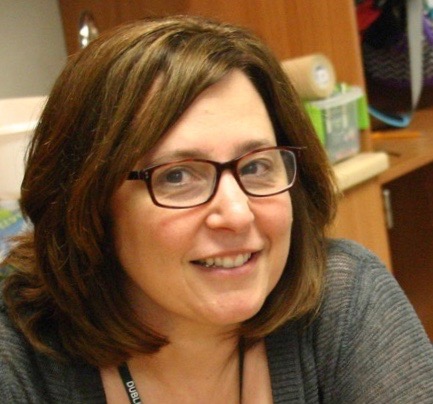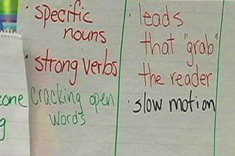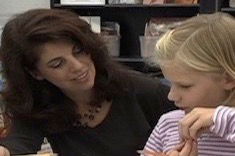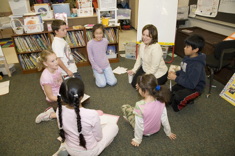My students often come in excited about continuing their fiction writing. When given the choice, it becomes clear that many intermediate students will use their free choice writing time to write fiction stories (mostly fantasy). They were not overly excited when I told them that this year we’d each be keeping a writer’s notebook.
I know the power of writer’s notebooks, especially for students in the upper elementary grades. As Aimee Buckner tells us in Notebook Know-How: Strategies for the Writer’s Notebook, “A writer’s notebook gives students a place to write every day…to practice living like a writer.” (p. 3) Even though I knew the power of notebooks, I also knew that I would have to work hard to help my students buy into a new kind of writing. How could I bridge the great work they had done in primary classes to new work that would help them grow as writers in the intermediate grades? As usual, I invited students to select notebooks that were the right fit for each of them. Kids brought in notebooks that were carefully selected and shared them with the class.
I knew that it was more important than ever that I find books and poems that helped them to see the power of notebooks in developing as writers. I own a good collection of great picture books and poetry to support writers in grades 3-6. Over the years, I have purchased many short texts to use with my students during writer’s workshop time. I love some of my old favorites, but I also wanted some new titles to add to my collection. I want books that will create conversations that are fresh to me as a teacher, and a balance of old and new books energizes my teaching.
I need to help kids begin to write what they know — stories and thoughts from their own lives. I don’t want them to think that I do not value the fiction writing that they do so well, but I want to help them move to new places in their writing. Third and fourth grade students are ready to understand the qualities of good writing in more sophisticated ways when the writing begins with what they know well.
In the first few weeks of school I plant seeds for conversation. Those first few weeks are about filling my classrooms with possibility. As a teacher of writing, I want my students to see the possibilities for their writing. I want them to be able to find ideas to write and think about writing and language in new ways.
What I Look for in Writer’s Craft Anchor Books
When I shop for books to use at the beginning of the year, I am looking for books that spark conversations about several things. Gathering ideas for writing is often a struggle for some students, so I am always on the lookout for books that kids can relate to — books that give students ideas for writing. I also want to show my students a variety of formats for writing so that they are comfortable trying lots of new styles and genres. And of course, I am always looking for examples of amazing language to lift the quality of writing in the classroom. Here are some titles that I like to share with my students during the first several weeks.
Talking About Experiences
Big Sister, Little Sister by LeUyen Pham explores the pros and cons of being the “little sister” told from the voice of the little sister. The reader finds out the good and not-so-good things that go along with having an older sister. This is a fun and loving story about sisters.
The Younger Brother’s Survival Guide by Lisa Kopelke is one of my favorites! This hysterical book is a set of steps needed to survive an older sister. The examples and illustrations are quite funny. Children will definitely be reminded of events that have happened with their siblings. It is also a unique format of “steps” which provides another possibility for student writing.
Super-Completely and Totally the Messiest! by Judith Viorst is an amusing story written by an older sister about her younger sister. The text and the illustrations work together for a fun and loving book about sisters, creativity and more. Kids will see themselves in the book or possibly see a sibling or friend.
One of my favorite books to use as a model for writer’s workshop isMarshfield Dreams by Ralph Fletcher. Ralph Fletcher does an amazing job of sharing his life as a child growing up in Marshfield, New Hampshire. Students connect in ways that want them to write like Ralph Fletcher.
Louise Borden’s The Last Day of School shows the reader the feelings students and teachers experience at the end of their year together. Kids will definitely relate to the main character and will see how events like the last day of school could become inspiration of writing.
Talking About Language
I love sharing My Mother’s Voice by Joanne Ryder with my students. The book is told in a child’s voice about her relationship with her mother. The relationship is told by focusing on the way that her mother’s voice is a comforting part of the child’s days. The focus on the voice and the language will definitely spark great talk about writing.
Beach by Elisha Cooper is a wonderful book about a day at the beach. The author uses intriguing phrases to capture the scenes on the beach on one particular day.
Welcome, Precious by Nikki Grimes is a book written as a welcome to a new baby. The repeating phrase welcomes the child to all of the joys of the world, using language that shares the love of the child’s parents.
Talking About Ideas for Writing
The Show-and-Tell Lion by Barbara Abercrombie is a story about a little boy who shares a not-so-true story about his pet lion when he can’t think of anything to share for Show and Tell. The stories build as classmates ask more questions about his pet. But with the help of his parents and teacher, he finds out that he can use his imagination and the stories he’s created about his “pet lion” to write about books. This could be a great lead-in to talk about ideas for fiction writing.
Written Anything Good Lately? by Susan Allen and Jane Lindaman is the companion book to Read Anything Good Lately? (Millbrook Picture Books)
by the same author. It is an alphabet book that introduces lots of ideas for types of writing that you can do – a terrific way to start conversations about different genres.
Talking about Format
Walk On!: A Guide for Babies of All Ages by Marla Frazee is a delightful how-to book for Babies. A fun format with a great lead (“Is sitting there on your bottom getting boring?”), kids can have great conversations about the creative how-to format.
Moving Day by Ralph Fletcher is a terrific anthology of poems that children will be able to relate to. The poems connect in a sequential way, so that it reads like a story. Following a character’s feelings through poems will help children see another possibility for their own writing.
Two useful models for nonfiction writing are Construction Zone by Cheryl Willis Hudson and Pumpkins
by Ken Robbins. Both picture books show use evocative language while sharing information. Both would be helpful to share with students so that they don’t fall into a report/encyclopedia rote style in their nonfiction work.









